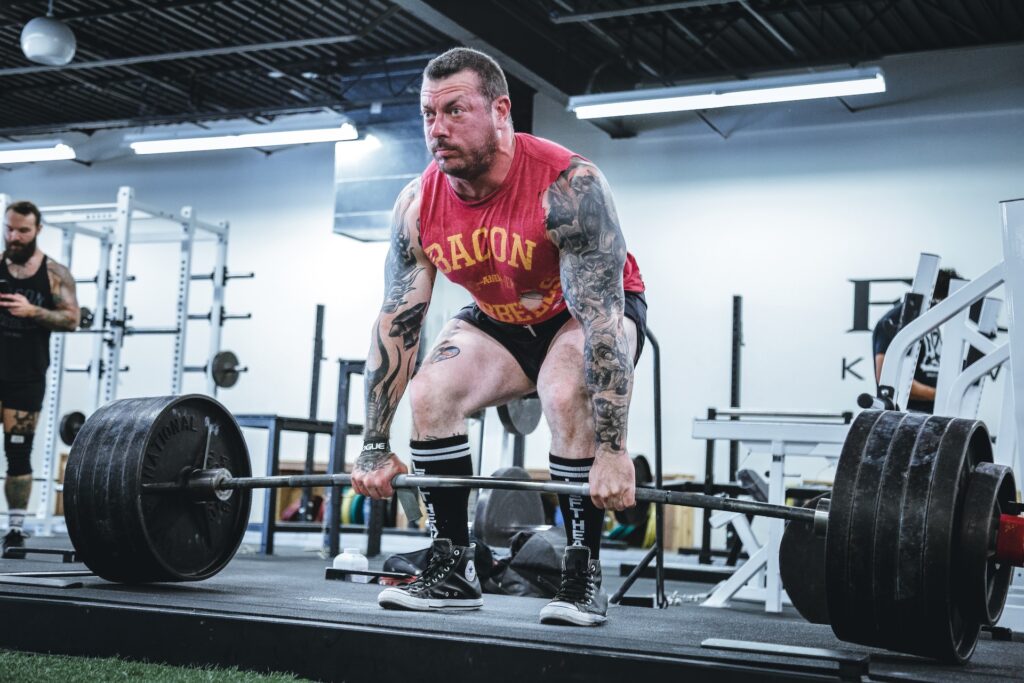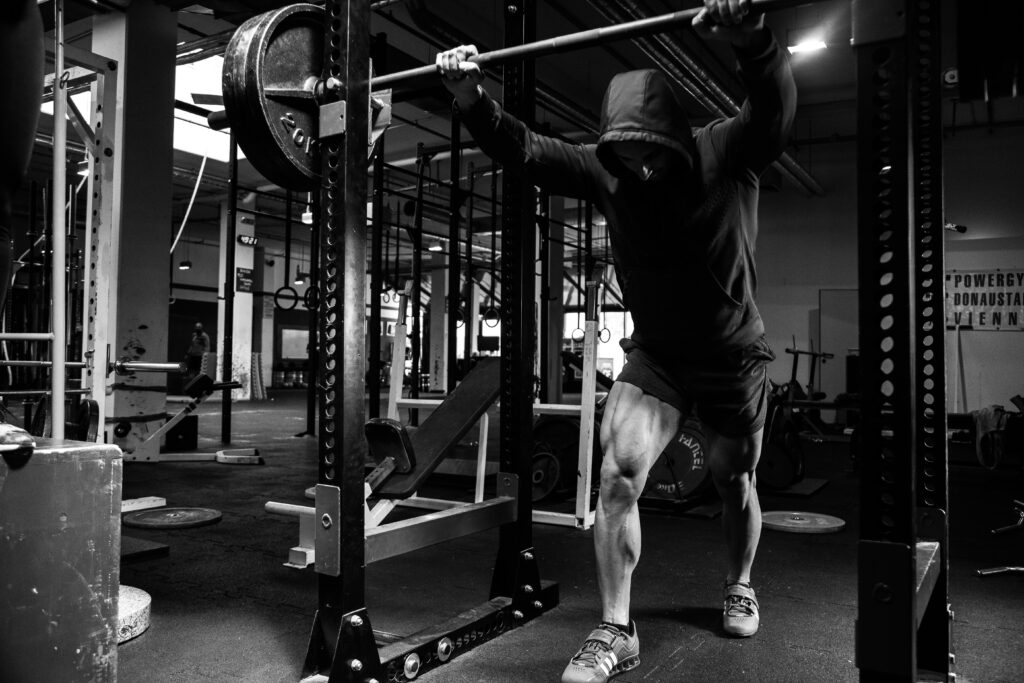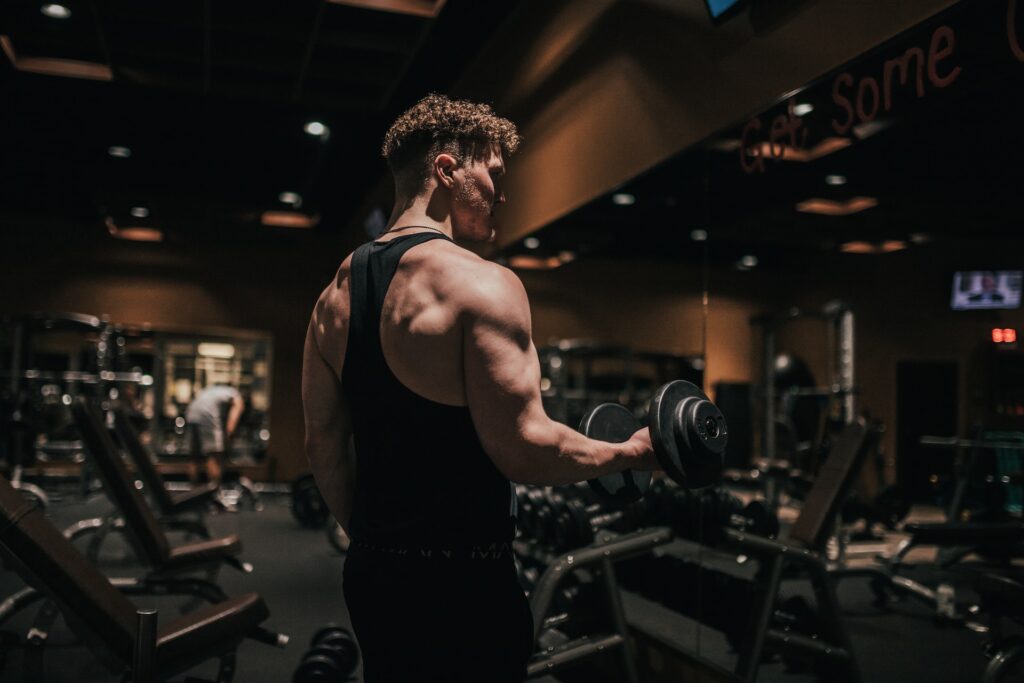Introduction to Training Intensity
A variety of factors contribute towards muscle growth, from the length a muscle is exposed to down to the total amount of sets and reps; however, one factor remains at the forefront – proximity to failure. Failure is the inability for a muscle to complete a desired movement or range of motion. For some, this may be calling the set short when the full range of motion (ROM) is no longer achievable, also known as task or movement failure. In contrast, others take this further and will complete partial reps when full ROM has been exhausted. When the individual has exhausted all partial reps, they will then have hit complete muscle failure.
When training to failure, one key characteristic of the set stands out: intensity. In the context of lifting, training intensity refers to the measured difficulty of the set regardless of the rep range or type of exercise. This can differ from person to person based on aspects such as previous training experience and pain tolerance.
Intensity scales
Intensity can be measured on an internal basis using various indicators and scales. The rate of perceived exertion (RPE) and Reps in reserve (RIR) scales can be great for this but come with a drawback; someone who lacks training experience may not know what 10/10 exertion feels like in a set if they’ve never done this before so have no previous comparisons. This holds true for RIR as well because somebody who has never trained to, or near to, failure may have told their trainer they only have two reps left in the tank based off of feel/sensation when, in actuality, there could have been three, four or five reps still in the tank. To work around this potential confusion, there are other ways to measure training intensity that still rely on sensation but can provide better clarification. These are:
- Physical inability to perform more reps
- Involuntary slowing of concentric contractions
- Burning/acidic sensation in the working muscle
- Involuntary movements/shaking
In the following sections, I will break each of these measures down individually and go into more detail on understanding if you or a client are training to the correct intensity.
Physical inability to perform more reps
Simply put, if you were to attempt another rep, you wouldn’t be able to achieve full range of motion.
Depending on the exercise, the direction of motion, strength/muscle profiles and many other factors, in some circumstances, this may result in the rep falling just short of full ROM (like grinding out those last reps on a leg extension machine). In other situations, it may result in very minimal or no movement at all (imagine failing at the bottom of a squat).
In low-rep range work, or more specifically, work that takes less than 20 seconds to complete, the body relies on an energy currency called Adenosine Triphosphate (ATP) to create energy. When an ATP molecule is broken down, energy is released, and through a process called the Krebs cycle, the ATP molecules can be rebuilt. Unfortunately, the rate at which our bodies rebuild ATP molecules is slower than the rate at which they are used up, meaning there will come a point where the muscle runs out of energy and movement comes to a halt. This is why certain sets may reach failure before the sensation in the muscle kicks in.
In work that takes place over longer time frames and at higher reps, the inability to complete more reps often comes as a result of point two, which we will go over in the next section.

Photo by Ryan Snaadt on Unsplash
Burning/acidic sensation
A muscle is an alkaline environment, meaning it has a PH level of 8 and above. The burning sensation you feel in the working muscle, particularly over longer sets, is the result of the muscle’s environment gradually becoming more acidic.
This increase in muscle acidity during higher rep/duration work occurs because, after the body has used up all of its existing ATP stores, it uses carbohydrates instead as its main energy source to create the ATP it needs to continue moving your muscles. This process creates a waste product in the muscles called Lactic Acid. The energy system in play here is known as the anaerobic energy system because it functions without the presence of oxygen.
So, why does the burning sensation indicate set intensity? Well, when the PH of the muscle becomes acidic (acidosis), this interferes with the muscle’s cellular mechanisms, gradually reducing overall muscular output (otherwise known as fatigue). There is a psychological component to this, as the process of acidosis triggers a pain response in the brain, meaning it may be tempting to finish your set when the pain kicks in rather than when actual muscular failure occurs. This means the set still felt intense, but the muscle possibly had more to give if the person had attempted to push through. Stopping due to the pain of lactic acid build-up can unintentionally leave reps in reserve.

Photo by Anastase Maragos on Unsplash
Involuntary slowing of concentric contractions
Contraction velocity is the speed at which the rep is performed. When ATP re-synthesis can no longer replenish at the rate it is being used, the concentric portion of the rep (moving the weight) slows down. In contrast, the eccentric portion (returning the weight to its starting position) speeds up. This results in the tempo of the rep reversing from the original goal. Eventually, the speed of each rep will slow down to the point where the range of motion either stops mid-set or, when attempting to start the next rep, no movement occurs.

Photo by Alora Griffiths on Unsplash
Involuntary movements/shaking
On exercises such as leg presses and machine squat variations where the hands remain free to move, individuals may start to experience a fidgety-like feeling as movements get more challenging. This may result in actions such as changing hand positions multiple times during the set as the individual tries to find the best possible body position to accrue the highest amount of assistance when bracing.
Muscle shaking usually occurs as fatigue increases in both the target muscle and the assistance and stabiliser muscles. For example, on a hack squat, the user may experience shaking of the legs or valgus/varus twitch-type movements that are emphasised by high levels of fatigue in the adductors and glutes. This can result in stabiliser/assistance muscles reaching their proximity to failure quicker than the target muscle; however, individuals can usually continue to accrue reps while the prime moving muscles are still active.
Although measuring intensity is generally intrinsic (no one but you knows how hard a set or rep is) and unique to each individual, there are other measures you can also look for. You could look for general signs of intensity, such as the inability to talk and redness in the face, as well as excess post-exercise oxygen consumption (additional breaths taken in to match and surpass the oxygen that wasn’t consumed mid-set) and the general feeling of weakness/central nervous system fatigue.
You may experience all of the indicators of intensity we have outlined today or just a few, depending on both the exercise and rep range. The key is to try to match the intensity you are working at every session and document the exercise progression over time.
___
If you want to see more information on training intensity, see my latest Instagram posts at @the_biomechanics_coach. Or, if you are interested in exploring other areas of your training and becoming the best athlete you can be, what about reading my last post on Nailing your exercise setup.



